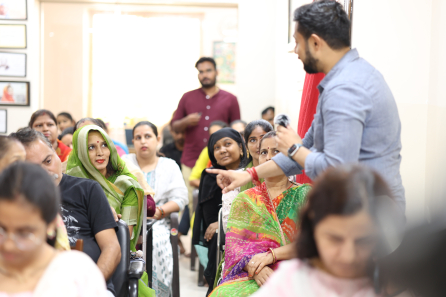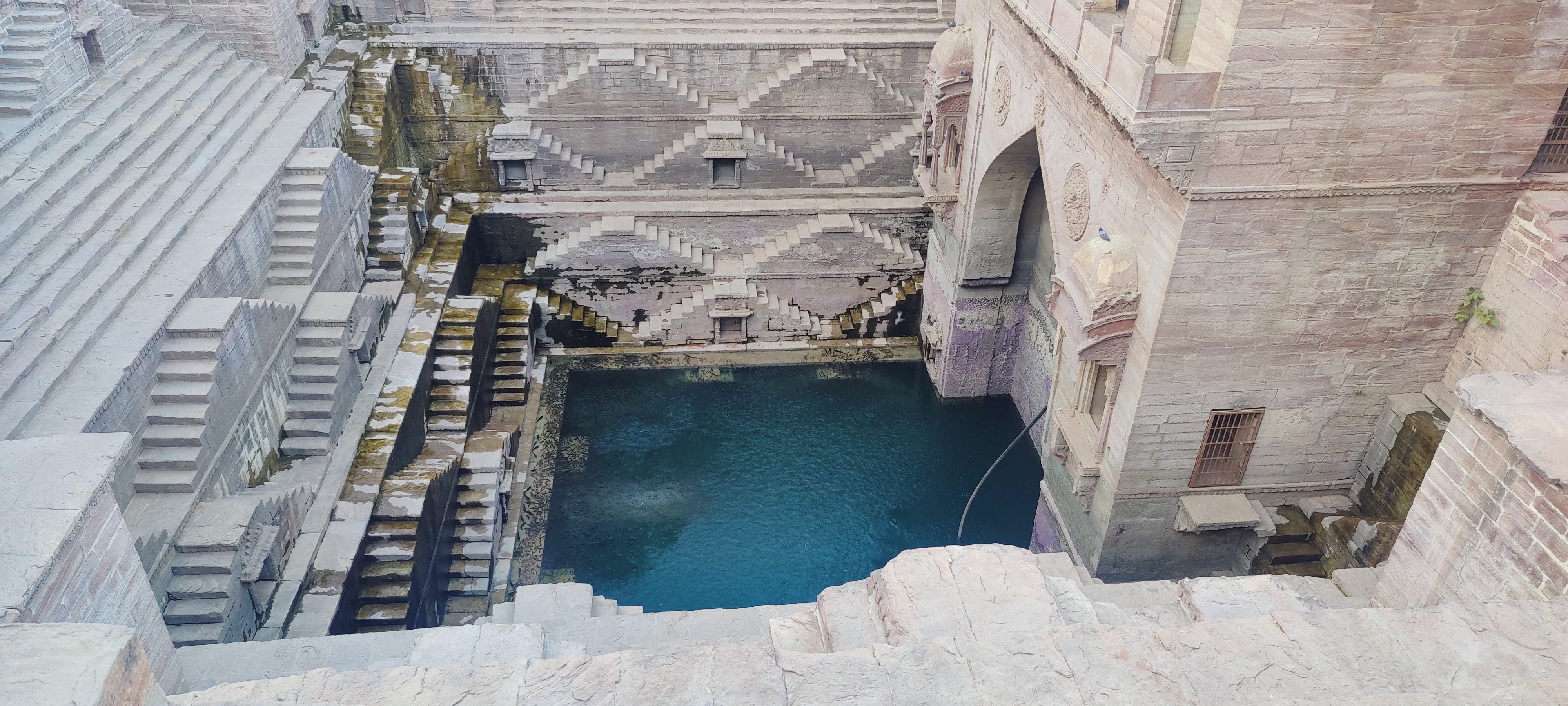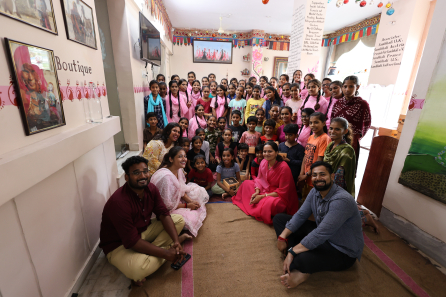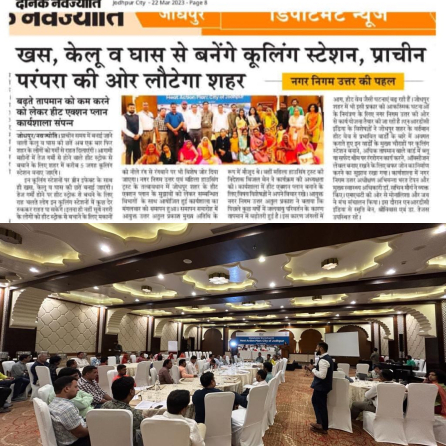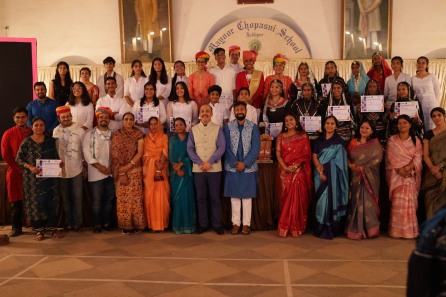GRRID Corps, a social entrepreneurial venture based in Kolkata, works with an international team at the intersection of climate action, disaster risk reduction, and sustainable development. Operating across three pillars—consultancy services, social innovation, and capacity building—GRRID Corps has quickly built a reputation through impactful interventions, recognitions, and awards. Founded by cultural first-aider and disaster risk management specialist Repaul Kanji, the startup drives meaningful change by collaborating with stakeholders, leveraging expertise across sectors, and focusing on innovative solutions, technology integration, and advocacy to create a more resilient and sustainable future for communities and businesses.
GRRID Corps' connection to ICCROM began with their participation in the Net Zero: Heritage for Climate Action project, a two-year, multilevel capacity development initiative conceived by ICCROM's flagship programme, First Aid and Resilience for Cultural Heritage in Times of Crisis (FAR), with generous support from the Swedish Postcode Foundation. As one of the project implementers of the innovation site in Jodhpur, India, GRRID Corps played a key role in conducting empirical research and field-testing strategies for culture-based climate action, disaster risk reduction, and peacebuilding.
GRRID Corps worked closely with the local community to integrate traditional cultural practices and vernacular architecture into modern developments, enhancing resilience to climate risks.
In the following blog, Repaul Kanji and Sriparna Sil, founders of the organization, will share their experiences, outlining the project's goals, progress, and impact on the local community and broader climate resilience efforts.
The concept of Net Zero: Heritage for Climate Action seemed very interesting. In a way, it challenged the usual discourse of relying on contemporary scientific solutions without exploring the possibility of blending traditional knowledge, indigenous practices and placed-based wisdom with modern learnings, and hence, we submitted a proposal.
What did you learn from participating in the project?
The Sanchay/CulTool project, as we call it, which was part of the intervention at the Net Zero: Heritage for Climate Action project's Jodhpur innovation site, was an eye-opener for many reasons. Here are some key takeaways from our experience:
- Holistic approach to complex issues: the project was truly comprehensive; from heat risks to urban flood risks to contemporary challenges like Urban Heat Islands (UHI), it touched upon many challenges. Importantly, it influenced all levels of society, from local women, children, and youth to government officials, politicians, and the Royal Family of Jodhpur. It was a project that managed to influence everyone in Jodhpur.
- Interconnected challenges require diverse solutions: most climate action interventions around us are very one-tracked and focused on single issues. The project reinforced the importance of adopting a holistic approach, considering the interplay of various factors, and addressing the complexities of climate change effectively.
- The top-down approach and bottom-up approach: such approaches are no longer relevant. For almost all cases, we need to adopt a pronged approach, influencing the top tier of decision-makers as well as nudging the communities.
- Almost every notion is contextual. When we think of traditional knowledge or Indigenous practices, the most usual image we think of is a very old male leader, but surprisingly, in the case of Jodhpur, most of the usable knowledge is held by women of traditional families. While this knowledge can be used for hyperlocal climate action, it is necessary to help the community women build their confidence to contribute.
- Children and youth have the potential to contribute knowledge and solutions to drive change and enhance climate resilience, but it needs to be channelled, and mentoring is essential, and this should come from outside of the usual curriculum.
- The working space of climate action and disaster risk reduction often faces limitations by governments and authorities – new ideas are challenged, and innovations are good only to the extent of narratives and documentation, but one would not find a lot of support when trying to implement such things.
What challenges did you face during your desk and field-based research?
Challenges are just new opportunities to learn great things and if that is the mindset, things become very easy:
- Do not trust information blindly; question everything. If needed, gather evidence and establish validity.
- Always work with a trans-disciplinary team of young people. While it would be difficult to set the baseline, but once that is done, the flow of ideas and the synthesis of possibilities is amazing.
- Always be ready to modify your ideas; what you think you would do might require changes on-field.
- Make all possible attempts to think like a detective to understand the root causes of the problems you are trying to address, or else, it would just be limited to scratching the surface.
What were the outcomes and key learnings from your research?
The project has already delivered significant outcomes, including:
- India's first Heat Action Plan (HAP), which intends to leverage traditional knowledge to beat the heat
- India's first climate-culture story, which illustrates the riskscape of the city through the narratives of the residents
- An implementable report on adopting vernacular architectural elements to build climate-intelligent and energy-efficient houses
- A prototype that measures temperature and humidity, which can be used to develop hyperlocal threshold values for extreme heat
- Recognition and awards: Best Enabler/Implementor Award at the India Nature-Based Solutions Forum 2024! The project received recognition at the India NbS (Nature-based Solutions) Forum 2024 for its innovative use of culture-based solutions. Adoption of the project learnings as a case study in ARC3.3 and the World Cities Report 2024
- Gender Just Climate Solutions Award in the Non-Technical category – The project of Jodhpur was nominated and will be showcased in the Gender Just Climate Solutions Publication, which will be disseminated during COP29 in Azerbaijan and published on the website of the Women and Gender Constituency and its member organizations, like WECF.
Can you share some of your on-the-ground experiences, especially in interacting with the local community?
There's a body of water in Jodhpur that the community believes has medicinal value. Trusting this to be true, many of our team members relished the water from the well. Physically, the well was well protected and guarded, and therefore, no one was suspicious. Later that evening, we met a scientist who had analyzed the content of the same well. To our utter dismay, the water was polluted.
What kind of feedback, support, or interest did you receive from the local community?
The project has earned so many accolades because of the local community. They have been supportive and were interested in getting involved. This would not have happened if we had taken an orthodox approach but each of us met and interacted with everyone in the city as a keen listener, eager to know more and help the cause.
Even to this day, we get calls from individuals who would want us to go back and start a subsequent phase of the project.
How do you see the project activities contributing to climate change mitigation and adaptation in the long term?
- Adaptation – Hyperlocal climate action based on place-based wisdom held by women, especially in case of extreme heat risk management. Children and youth are more sensitive towards the use of their culture for their city's betterment.
- Mitigation – If the community remains as vigilant as it is now and the government supports the community, urban floods could be mitigated.
How will this project positively impact the lives of community members?
- Tourism along specific areas would see an increase because now the narrative is to invite tourists to see traditional houses that have been built in a way that keeps them cool.
- Communities are more sensitive about maintaining the water-bodies in their locality.
- The Royal Family has taken a keen interest in safeguarding cultural heritage in collaboration with the National Institute of Disaster Management and the National Disaster Management Authority.
- Schools have become more sensitive and responsive towards climate action.
- Involved members of the team have now started getting more opportunities, diversifying their career opportunities.
How do you plan to use this recognition to scale up efforts for heritage-based climate action?
We plan to use the climate-culture story model to build resilience in other parts of the nation because every place has a climate story, and we strongly believe from our experiences in this project that it can be used to build resilience.

